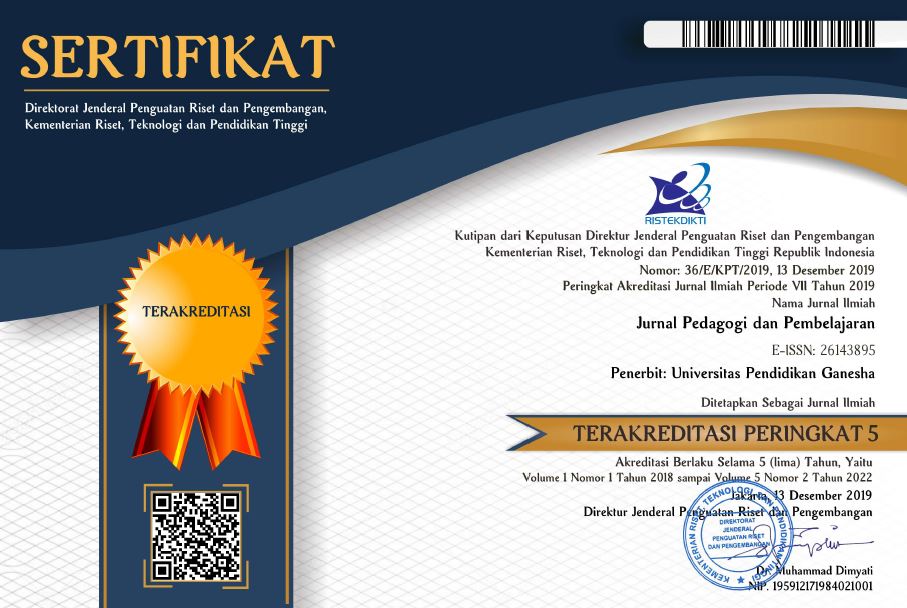Profile of Students Creative Thinking Skills and Implementation of Inquiry-based Learning Assisted by Physics 3D Module
DOI:
https://doi.org/10.23887/jp2.v7i2.68112Kata Kunci:
Inquiry Based Learning, Creative Thinking Skills, Elasticity, Hooke's LawAbstrak
So far in physics subjects, especially material that contain many formulas, students have complained about difficulties in accepting the material. This is because the learning model and learning media used are still not in accordance with the material provided. The study aimed to analyze surveys about learning model used in physics lesson and tests using indicators of creative thinking ability specially on the material elasticity. This research is preliminary research with a descriptive research design. This research does not use a hypothetical test design but rather a description research project. The study was conducted on 181 students consisting of: 78 male students and 103 female students. The study uses three instruments to gather data, i.e. a.) a creative thinking test instrument of four indicators flexibility, elaboration, originality and fluency on material elasticity and Hooke law, b.) teacher interview sheet about learning model used in physics lesson, c.) student questionnaire about perspective of physics lesson, learning models and learning media. The results showed the creative thinking ability of students still belongs to the low category. The implication is that teachers must be able to apply appropriate learning models and learning media in the process so that students are able to receive the material well and have the ability to think creatively.
Diterbitkan
Cara Mengutip
Terbitan
Bagian
Lisensi
Hak Cipta (c) 2024 Nabillah Zuhrotun Nisa, Binar Kurnia Prahani, Marianus, Irwanto, Muhammed Akif Kurtulus, Muhammad Nur Hudha

Artikel ini berlisensiCreative Commons Attribution-ShareAlike 4.0 International License.
Authors who publish with Jurnal Pedagogi dan Pembelajaran agree to the following terms:- Authors retain copyright and grant the journal the right of first publication with the work simultaneously licensed under a Creative Commons Attribution License (CC BY-SA 4.0) that allows others to share the work with an acknowledgment of the work's authorship and initial publication in this journal
- Authors are able to enter into separate, additional contractual arrangements for the non-exclusive distribution of the journal's published version of the work (e.g., post it to an institutional repository or publish it in a book), with an acknowledgment of its initial publication in this journal.
- Authors are permitted and encouraged to post their work online (e.g., in institutional repositories or on their website) prior to and during the submission process, as it can lead to productive exchanges, as well as earlier and greater citation of published work. (See The Effect of Open Access)









